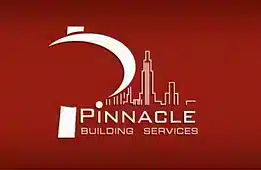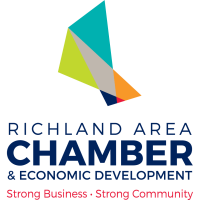Budgeting plays a critical role in facilities management, serving as the financial roadmap that guides decision-making and strategic planning. It provides an estimate of the costs of maintaining and improving physical spaces, from routine maintenance to major renovations. With this guide, we’ll give you everything you need to effectively plan and control your own organization’s finances. Let’s get started!
Understanding Facilities Management Budgeting
First, let’s look at the definition of facilities management budgeting in a little more depth.
Facilities management budgeting is a comprehensive and structured approach to financial planning, specifically designed for the effective management of an organization’s physical infrastructure. This includes buildings, utilities, equipment, and other assets that support the primary operational functions of the organization.
At its core, facilities management budgeting involves estimating and allocating costs for various needs such as routine maintenance, repairs, capital improvements, utilities, safety measures, and personnel. It requires a deep understanding of the lifespan and upkeep requirements of different assets, the cost of labor and materials, and the impact of market trends.
There are several key steps in facilities management budgeting:
- Data Collection: This involves gathering information about the current state of the facility, including the condition and maintenance needs of various assets, current and projected utility costs, labor costs, and more.
- Cost Estimation: Based on the data collected, facilities managers estimate the costs of maintaining and improving the facility. This should include both routine costs and potential unexpected expenses.
- Prioritization: Not all projects can be undertaken at once, and some may offer a greater return on investment than others. Facilities managers must prioritize projects based on factors like urgency, cost, and strategic value.
- Allocation: Once costs have been estimated and projects prioritized, resources can be allocated accordingly. This involves deciding how much funding each project or area will receive.
- Review and Adjustment: A budget is not a static document. It should be reviewed regularly and adjusted as needed to reflect changes in costs, priorities, or strategic direction.
By providing a clear plan for the allocation of resources, facilities management budgeting helps ensure that an organization’s physical infrastructure is well-maintained and capable of supporting its operational needs. Furthermore, it allows for strategic decision-making, cost control, and long-term financial planning.
Key Components of a Facilities Management Budget
A facilities management budget is composed of several key components that cover all aspects of maintaining and upgrading an organization’s physical infrastructure. Here are the main areas it typically includes:
- Personnel Costs: This covers salaries, benefits, and training costs for the staff involved in facilities management. This could include in-house maintenance teams, cleaning staff, security personnel, and administrative support.
- Maintenance and Repairs: Regular maintenance is crucial to keep a facility running smoothly and avoid major breakdowns. This budget component includes routine inspections, preventive maintenance, repairs, and replacement of parts or equipment.
- Capital Improvements: These are larger, often one-time projects aimed at improving or expanding the facility. Examples could include renovations, adding new facilities, or major equipment upgrades. These projects usually require significant investment and are often planned and budgeted for years in advance.
- Utilities Expense: This includes costs for electricity, water, heating, cooling, and waste disposal. Depending on the size and nature of the facility, utilities can make up a substantial part of the overall budget.
- Services and Contracts: Many facilities outsource certain services like cleaning, landscaping, or specialized maintenance tasks. The costs for these contracts need to be factored into the budget.
- Emergency Funds: It’s important to set aside funds for unexpected expenses, such as urgent repairs or replacements due to equipment failure or natural disasters.
- Compliance Costs: Facilities must comply with various safety, health, and environmental regulations. Compliance costs might include regular inspections, equipment or process upgrades, and fees associated with permits and licenses.
Each of these components must be carefully estimated and monitored to ensure that the facilities management budget accurately reflects the costs of maintaining and improving the organization’s physical infrastructure.
Strategies for Effective Financial Planning in Facilities Management
Effective financial planning in facilities management involves a strategic approach to budgeting that maximizes value while minimizing costs. Here are some key strategies:
- Regular Assessment and Review: It’s important to regularly review and adjust the budget based on actual expenses and changing needs. This helps ensure that your budget remains accurate and relevant.
- Benchmarking: Comparing your expenses and performance with similar organizations can provide valuable insights. If your costs are significantly higher in certain areas, it may indicate inefficiencies that need to be addressed.
- Prioritization of Expenditures: Not all tasks or projects are equally important. Prioritize based on factors like urgency, potential impact on operations, and return on investment. This helps ensure that critical tasks are completed first and that resources are used effectively.
- Long-Term Strategic Planning: While it’s important to budget for immediate needs, don’t neglect long-term planning. Consider future needs like major renovations or equipment replacements, and start setting aside funds now.
- Energy Efficiency: Investing in energy-efficient solutions can reduce utility costs in the long run. Consider things like LED lighting, energy-efficient HVAC systems, or solar panels.
- Staff Training and Development: Well-trained staff can work more efficiently and prevent costly mistakes. Budgeting for regular training and development can improve overall performance and reduce costs in the long run.
- Leverage Technology: Modern facilities management software can provide real-time data, automate processes, and improve budget tracking. Investing in such tools can lead to significant cost savings.
By implementing these strategies, facilities managers can create a financial plan that effectively balances the need for cost control to maintain a high-quality, efficient, and compliant facility.
Controlling Costs in Facilities Management
Controlling costs is a vital aspect of facilities management. It involves managing resources efficiently, reducing wastage, and making strategic decisions to save money without compromising the quality of services. Here are some strategies for controlling costs in facilities management:
- Preventative Maintenance: Regularly servicing equipment and facilities can prevent costly breakdowns and extend the life of assets. It’s generally more cost-effective to maintain equipment than to replace it.
- Energy Efficiency: Implementing energy-efficient practices and technologies can significantly reduce utility costs. This could include installing energy-efficient lighting or heating systems, implementing energy management systems, and encouraging energy-saving behaviors among staff.
- Vendor Contract Negotiation: Regularly review contracts with vendors and negotiate for better terms. This could involve seeking multiple bids for services, negotiating lower rates, or bundling services to get a better deal.
- Staff Training: Investing in employee training can lead to improved efficiency and reduced errors, which can save money in the long run.
- Waste Reduction: Identify areas of waste within your facility and implement strategies to reduce it. This could include reducing material waste, improving energy efficiency, or streamlining processes.
- Technology Adoption: Utilizing technology can lead to significant cost savings. For instance, facilities management software can automate tasks, provide real-time data for better decision-making, and improve overall efficiency.
- Regular Audits: Conduct regular audits to identify inefficiencies, track spending, and ensure you’re staying within budget. This can help you spot any financial issues early and take corrective action.
By implementing these cost control strategies, facilities managers can ensure that their operations remain financially sustainable while still meeting the needs of their organization.
Implementing Technology for Better Budgeting
Technology plays a significant role in modern facilities management, particularly when it comes to budgeting and financial planning. Here’s how technology can be implemented for better budgeting:
- Facilities Management Software: There are numerous software solutions available that can help streamline facilities management tasks, including budgeting. These tools can automate routine tasks, track expenses in real time, and provide valuable data for decision-making.
- Automation: Automating certain processes can lead to significant cost savings by reducing the need for manual labor and minimizing errors. This could include automating maintenance schedules, invoice processing, or energy management systems.
- Data Analysis: Modern technologies can collect and analyze vast amounts of data, providing insights that can inform budgeting decisions. For example, data on equipment usage can help predict when repairs or replacements will be needed, allowing for more accurate budgeting.
- Energy Management Systems: Technology can also be used to manage and reduce energy usage, which can significantly impact a facility’s budget. This could involve using smart thermostats, energy-efficient lighting systems, or automated power management systems.
- Predictive Maintenance: Using technology to monitor equipment and predict when maintenance is needed can prevent costly breakdowns and extend the life of your assets. This can lead to significant savings in the long run.
- Digital Communication Tools: These tools can improve communication and collaboration within the facilities management team, making it easier to coordinate tasks, share information, and stay within budget.
Implementing technology can require an upfront investment, but the potential for improved efficiency, cost savings, and more accurate budgeting can make it a worthwhile expenditure. By embracing these tech tools, facilities managers can modernize their operations and make more informed, strategic budgeting decisions.
Conclusion
To sum it all up, the importance of effective budgeting in facilities management cannot be overstated. It optimizes value, ensuring that every dollar spent contributes to the efficiency, safety, and effectiveness of your facility. The rewards of proactive financial planning and cost control in facilities management are well worth the effort – from improved operational efficiency and reduced waste to enhanced asset lifespan and ultimately, substantial cost savings. With these excellent financial management practices, you are sure to help your facility succeed!




